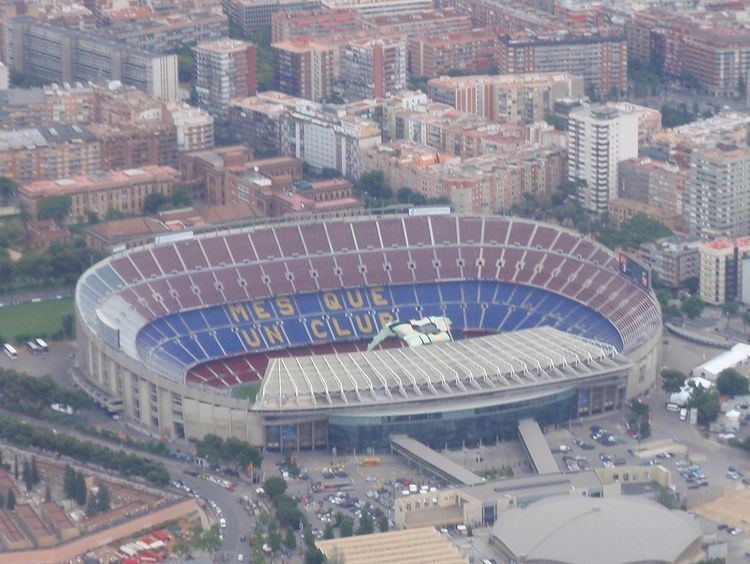 | ||
The following is a list of the largest European stadiums. They are ordered by their audience capacity; i.e., the maximum number of spectators the stadium can normally accommodate.this means that if standings are allowed they are not counted. The capacity figures are for permanent total capacity, including seating and any official standing areas, but excluding any temporary seating or standing. Note that movable seating - used by multi-purpose stadiums (such as those supporting both a rugby or association football pitch plus an athletics track) to regularly convert the stadium for maximum spectator viewing convenience at one of its supported sporting events - is considered permanent rather than temporary seating in determining such maximum capacities, as is any form of retractable seating associated with safe standing (which allows the same spectator area in a stadium to be used for either standing or seated purposes). Also note that stadiums supporting either regularly used movable seating or regularly used retractable seating (for safe standing purposes), will not be counted (plus supporting annotation) in the following list - one for the stadium's capacity with the seating deployed (indicated "(d)"), and one for when the seating is not deployed (indicated "(nd)"). For the few stadiums that support both retractable and moveable seating a third capacity number will be required for the deployed movable seating capacity, indicated by "(m)" (note: safe standing is usually not applicable when movable seating deployed). Such multi-capacity stadiums (e.g., Signal Iduna Park in Dortmund, Stade de France in Paris and Veltins-Arena in Gelsenkirchen) will be sorted in the list based on the largest of these capacity values.
Contents
Finally, stadium capacities for hosting music concerts should never be included in the list since such use normally permits the audience to stand on the stadium's playing surface - especially if such concerts are only ever staged during limited periods of the year (such as the summer "closed season" in most football sports) - as both of these usage qualities clearly fall under the definition of "one-off", "temporary" or "secondary" use rather than "regular", "permanent" or "primary" use.
All stadiums with a capacity of 25,000 or more are included. The list includes all such stadiums in any country which is commonly accepted to be within the borders of Europe, including transcontinental countries that are partially in Europe (e.g., Russia and Turkey), or in a non-European country commonly thought to be European for cultural or historic reasons (e.g., Israel, Cyprus, Azerbaijan, Georgia and Armenia).
An asterisk(*) indicates that a team does not play all of its home matches at that venue.
Capacity of 25,000 or more
The "Category" column indicates whether the stadium has been designated by UEFA as capable of hosting Champions League or Europa League matches. Not having a category does not imply an inability or failure of the stadium's capabilities to host such games. The stadium owners may simply have never applied to host a UEFA fixture (which is the case for most of the exemplary stadiums listed whose primary use is not football).
Under construction
The following is a list of all European stadiums which are currently under construction and will have a capacity of 25,000 or more.
